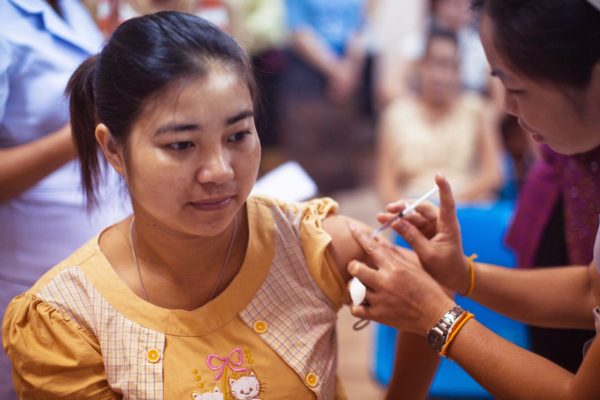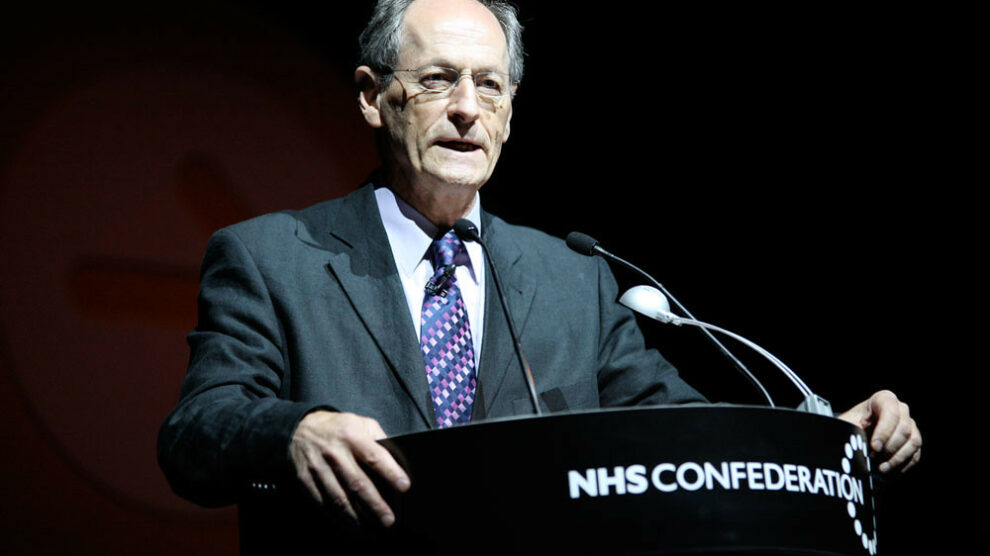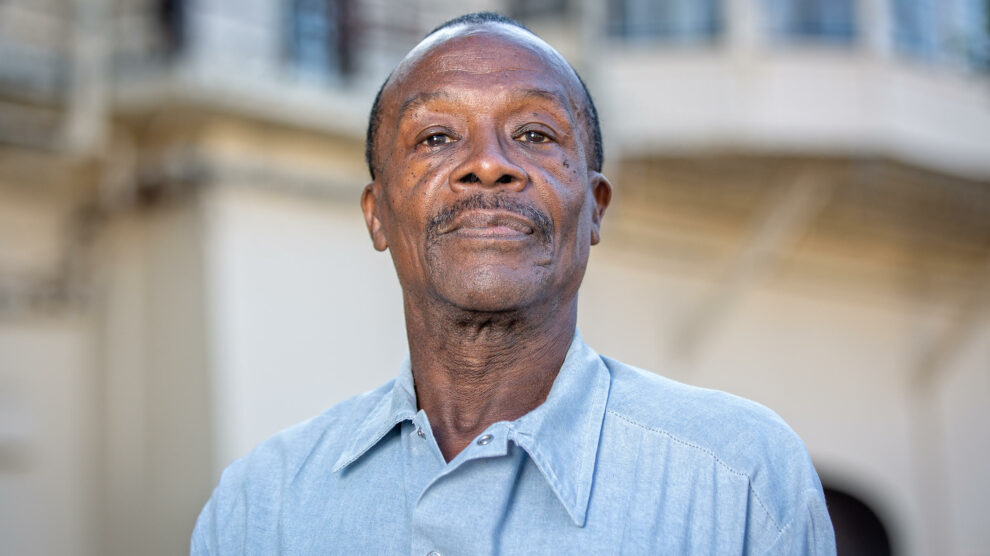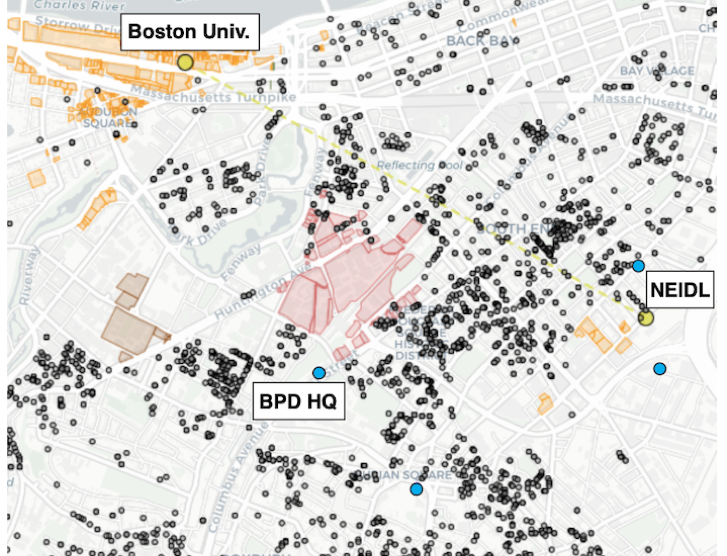June 25, 2020
#FreeTheVaccine to End the Pandemic
By Nafis Hasan

The latest series of police killings of Black people, and ensuing nationwide protests, have understandably overshadowed the Coronavirus Disease 2019 (COVID-19) pandemic in the United States.1,2 Yet, the pandemic remains a distinct reality, considering the patchwork of COVID-19 responses across the United States.3 Early on, epidemiologists from Imperial College London had reported that, while the pandemic may end, the virus will continue to infect populations over the next year or until a vaccine becomes available.4 Along with these projections, the failure of attempted herd immunity in Sweden, lackluster results from clinical trials of the much-hyped antiviral Remdesivir, and the ultimate failure of the controversial hydroxychloroquine, all intensify the need for a vaccine against COVID-19.5,6,7
The race to find a vaccine began almost as soon as COVID-19 became a pandemic; however, scientists estimate that it would be at least twelve to eighteen months for a vaccine to become available.8 Encouraging Phase 2 clinical trial data are emerging from China, signaling the possibility that a vaccine might be ready by December 2020.9 Efforts are also underway in the United States under the Trump Administration’s Operation Warp Speed, a public-private joint enterprise, where federal money is supplementing the biotech industry’s vaccine development efforts. Moderna, Johnson & Johnson, and AstraZeneca have already received $2.2 billion; these companies, along with Pfizer and Merck, will have access to additional funding for clinical trials and other operations even before the efficacy of their products is made clear.10
While these efforts are heartening, current nativist biopolitics will render any vaccination program ineffective in stopping the pandemic. The Trump Administration’s America First approach to COVID-19 vaccination and the United States cutting ties with the World Health Organization (WHO) will only deprive high-risk populations globally.11,12 This will also encourage other countries to adopt nativist approaches to protect their own populations, similar to the personal protective equipment fiasco a few months ago.13 The increasing tensions between the United States and China over COVID-19 threaten the global supply chain and, therefore, harm vaccine production efforts in the United States and abroad.14
The current neoliberal framework of vaccine research and development (R&D) and production also submits a necessary public good to the will of the free market. A cursory glance at the market and the last few decades of vaccine R&D and production shows a classic “boom-and-bust” cycle. Similar to antibiotics, vaccines are not profitable. This realization led to a mass exodus of pharmaceutical companies away from the field. By 1996, there were eight firms producing childhood vaccines for the US market, and it had shrunk down to four in 2002. An independent analysis found a low risk-adjusted return on investment to be one of the major factors for such downsizing.15
Yet, with the advent of new biotechnologies, the market grew past twenty billion dollars by 2010, with eighty percent of the global market share belonging to five major companies that maintained control through oligopolistic behavior. Despite their dominance, the five multinationals remain woefully behind on production capacity to meet the global needs for essential vaccines.16
Regardless of the realization that vaccine development will still be in the grips of the free market for the near future, we can still ensure that the COVID-19 vaccine is made accessible to all. This is the goal of the #FreeTheVaccine campaign, launched by Universities Allied for Essential Medicine (UAEM) in collaboration with the Center for Artistic Activism on April 8, 2020, at a global virtual event attended by 300 people from twenty-nine countries. According to the #FreeTheVaccine website, the campaign aims to make the vaccine free to any individual at the point of sale and to guarantee that the manufacturer provides an affordable price within a government’s budget. UAEM’s strategy is to recruit researchers working on COVID-19-related biotechnology from around the world to sign the Open COVID-19 Pledge to create an open-access repository for methodology and data from preclinical experiments and clinical trials, and to ensure that any innovation made with public funding be made available off-patent so generic manufacturers can access it. This open-access repository will lead to a reduction in clinical trial redundancies and the sharing of responsibilities in diagnostics and innovation, which will hopefully snowball and delink the price of drug development from the price of the end product.
The demands of #FreeTheVaccine are not utopian, but rather, grounded in history. Yale University researchers developed d4T—an antiretroviral therapy (ART) for human immunodeficiency virus/acquired immune deficiency syndrome (HIV/AIDS)—in 1984 and distributed the drug through Bristol-Myers Squibb. In 2001, along with HIV/AIDS patient advocacy groups, UAEM successfully pressured Yale to adopt a global accessing licensing framework for d4T. This development helped future ART to become more affordable, rendering AIDS a livable condition rather than a death sentence. Similarly, the Drugs for Neglected Diseases Initiative has successfully created an alternative model of R&D where their drug development pipeline costs approximately $4.5–70 million, compared to big pharma’s cost of up to $2.6 billion (with a median cost of $985 million) per drug.17,18
However, current COVID-19 vaccine development is being led by private companies and not universities. Subsequently, #FreeTheVaccine wants to build public pressure on vaccine manufacturers to put people over profit and, if that fails, to convince the United States government to use compulsory licensing law, a mechanism that would allow the production of patented drugs without requiring the authorization of the patent holder; that is, the pharmaceutical companies in this case.
While compulsory licensing has never been employed, the federal government did threaten to use it against Bayer AG for its drug Cipro, a cure for anthrax infection, in the 1990s that resulted in the company dropping the drug price.19 Similarly, the Trade-Related Aspects of Intellectual Property Rights Agreement, which was included during the establishment of the World Trade Organization in 1994, allows member countries to enact compulsory licensing mechanisms if they cannot afford biomedical R&D. Canada, Chile, Ecuador, and Germany have already enacted these mechanisms to ensure the availability and affordability of COVID-19 drugs, vaccines, and other medical tools.20
A nativist approach to a COVID-19 vaccine amounts to an ecofascist one. Just as the scientific community has collaborated across the globe to identify COVID-19 and understand its pathology, drug and vaccine development needs to be done in a collaboration of that scale.21 In that vein, the WHO Director General and heads of member states made a solidarity call to action on May 29, 2020, by establishing a COVID-19 Tech Access Pool to accumulate and share knowledge, and to ensure that there are no patent barriers.22 Unfortunately, the withdrawal of the United States from the WHO blocks its access to such knowledge and, therefore, sets back the nation’s pandemic response. The only solution is for all of us to work together and for the vaccine to be made available to all, for free.
—
Nafis Hasan studies brain tumors as a Postdoctoral Scholar at Tufts University. He is a member of Science for the People Boston chapter, the editorial collective of the Science for the People magazine, and a climate organizer with Democratic Socialists of America. His interests lie in the intersection of science, society and politics, and the nature of humanity’s relationship with the environment.
References
- Mallory Simon, “Over 1,000 Health Professionals Sign a Letter Saying, Don’t Shut Down Protests Using Coronavirus Concerns as an Excuse,” CNN, June 5, 2020, https://www.cnn.com/2020/06/05/health/health-care-open-letter-protests-coronavirus-trnd/index.html.
- Roni Caryn Robin, “Will Protests Set off a Second Viral Wave?” New York Times, May 31, 2020, https://www.nytimes.com/2020/05/31/health/protests-coronavirus.html.
- Ed Yong, “America’s Patchwork Pandemic Is Fraying Even Further,” The Atlantic, May 20, 2020, https://www.theatlantic.com/health/archive/2020/05/patchwork-pandemic-states-reopening-inequalities/611866/.
- Sabine L. van Elsland and Ryan O’Hare, “COVID-19: Imperial Researchers Model Likely Impact of Public Health Measures,” Imperial College London, March 17, 2020, https://www.imperial.ac.uk/news/196234/covid19-imperial-researchers-model-likely-impact/.
- David Keyton and Jan M. Olsen, “Sweden’s COVID-19 Response Chief Admits Strategy to Keep Country Open Has ‘Potential for Improvement,’” USA Today, June 4, 2020, https://www.usatoday.com/story/news/world/2020/06/04/coronavirus-sweden-admits-herd-immunity-strategy-could-improved/3142761001/.
- Matthew Herper, “Covid-19 Study Details Benefits of Treatment with Remdesivir, and Also Its Limitations,” STAT, May 22, 2020, https://www.statnews.com/2020/05/22/covid-19-study-details-benefits-of-treatment-with-remdesivir-and-also-its-limitations/.
- Matthew Herper, “Hydroxychloroquine Does Not Prevent Covid-19 Infection if Exposed, Study Says,”STAT, June 3, 2020, https://www.statnews.com/2020/06/03/hydroxychloroquine-does-not-prevent-covid-19-infection-in-people-who-have-been-exposed-study-says/.
- German Lopez, “A Coronavirus Vaccine May Take Longer Than 12 to 18 Months,” Vox, May 15, 2020, https://www.vox.com/2020/5/15/21255817/coronavirus-vaccines-treatments-development-timeline.
- Benjamin Fearnow, “Chinese Firms Say Coronavirus Vaccine Will Be Ready by End of Year, ‘99 Percent’ Effective,” Newsweek, May 31, 2020, https://www.newsweek.com/chinese-firms-say-coronavirus-vaccine-will-ready-end-year-99-percent-effective-1507657.
- Noah Weiland and David E. Sanger, “Trump Administration Selects Five Coronavirus Vaccine Candidates as Finalists,” New York Times, June 3, 2020, https://www.nytimes.com/2020/06/03/us/politics/coronavirus-vaccine-trump-moderna.html.
- Helen Branswell, “Under an ‘America First’ President, Will the U.S. Corner the Market on Covid-19 Vaccine?” STAT, May 15, 2020, https://www.statnews.com/2020/05/15/under-an-america-first-president-will-the-u-s-corner-the-market-on-covid-19-vaccine/.
- Andrew Joseph and Helen Branswell, “Trump: U.S. Will Terminate Relationship with the World Health Organization in Wake of Covid-19 Pandemic,” STAT, May 29, 2020, https://www.statnews.com/2020/05/29/trump-us-terminate-who-relationship/.
- Nahal Toosi, “‘Lord of the Flies: PPE Edition’: U.S. Cast as Culprit in Global Scrum Over Coronavirus Supplies,” POLITICO, April 3, 2020, https://www.politico.com/news/2020/04/03/ppe-world-supplies-coronavirus-163955.
- “China Enters the Global Vaccine Market”, Bulletin of the World Health Organization 92, no. 9 (September 2014): 626-627, doi:10.2471/BLT.14.020914.
- H. Grabowski and J. Vernon, “The Determinants of Pharmaceutical Research and Development Expenditures,” in Capitalism and Democracy in the 21st Century, eds. D.C. Mueller and U. Cantner (Heidelberg: Physica, 2001).
- Institute of Medicine, Financing Vaccines in the 21st Century: Assuring Access and Availability (Washington, DC: The National Academies Press, 2004), doi:10.17226/10782.
- Drugs for Neglected Diseases Initiative, 15 Years of Needs-Driven Innovation for Access: Key Lessons, Challenges, and Opportunities for the Future, (2019), https://www.dndi.org/wp-content/uploads/2019/10/DNDi_ModelPaper_2019.pdf.
- Joseph A. DiMasi, Henry G. Grabowski, and Ronald W. Hansen, “Innovation in the Pharmaceutical Industry: New Estimates of R&D Costs,” Journal of Health Economics 47 (May 2016): 20-33.
- Thomas F. Mullin, “AIDS, Anthrax and Compulsory Licensing: Has the United States Learned Anything? A Comment on Recent Decisions on the International Intellectual Property Rights of Pharmaceutical Patents,” ILSA Journal of International & Comparative Law 9 (2002): 185-209.
- “MSF Calls for No Patents or Profiteering on COVID-19 Drugs, Tests, and Vaccines in Pandemic,” Medecins Sans Frontieres, March 27, 2020, https://msfaccess.org/msf-calls-no-patents-or-profiteering-covid-19-drugs-tests-and-vaccines-pandemic.
- Matt Apuzzo and David D. Kirkpatrick, “Covid-19 Changed How the World Does Science, Together,” New York Times, April 1, 2020, https://www.nytimes.com/2020/04/01/world/europe/coronavirus-science-research-cooperation.html.
- “COVID-19 Technology Access Pool,” World Health Organization, accessed June 24, 2020, https://www.who.int/emergencies/diseases/novel-coronavirus-2019/global-research-on-novel-coronavirus-2019-ncov/covid-19-technology-access-pool.





